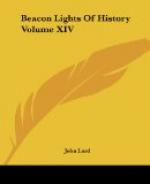A narrow strip of fine farm lands across the south end of Africa, another along the southern border of the former Boer republics, and a large area among the highlands of Mashonaland, far towards the equator, produce nearly all the crops of the temperate zones. It is not yet certain, however, that South Africa will ever raise enough wheat for a great white population. On the northern slopes of the hills, east and northeast of Cape Town, are thousands of acres of grapes. Cape Colony is becoming one of the important wine countries; and in February and March, large quantities of grapes, peaches, nectarines, and plums are placed in cool rooms on steamships and sent fresh to British markets almost before English fruit trees are in bloom.
East of the grape region is an area peculiarly adapted for the cultivation of tobacco; and east of the tobacco district, north of the coastal belt of wheat in a region of sandy scrub, the bush country, are the ostrich farms, in the hands mainly of men of considerable capital, who supply nearly all the feathers derived from the domesticated ostrich. The plumes are sometimes worth as much as $200 a pound, the ordinary feathers bringing from $5 to $7 a pound. Natal is unique in two of its agricultural industries, being the only colony that is producing tea and important quantities of cane sugar.
But gold, widely scattered over the country on the interior plateau, exceeds in value all the other exports together. The world never saw such a development of gold mining in a small area as has occurred on the Witwatersrand, where Johannesburg stands. The Witwatersrand (White River Slope) is a slight elevation, the water parting between rivers, about one and a half miles wide and 125 miles long. On twenty-five miles of the rand, at and near Johannesburg, more gold was produced in the year before the Boer war than was yielded by any other country in the world, The other rich mining regions of the Transvaal and other parts of South Africa have been completely dwarfed by the wonderful product of the rand. The surveys in Matabeleland and Mashonaland show gold-bearing areas 5,000 square miles in extent, which as yet have practically no development. The mining companies on the rand and elsewhere are now preparing for far larger operations than ever before.
The Kimberley diamond mines, turning out more than $20,000,000 worth of rough stones a year, supply nearly all the diamonds of commerce. Two other diamond centres in the Orange River Colony have scarcely been touched, and diamonds are found on the Limpopo River and in other regions where no mining has been undertaken. The minerals of South Africa, including iron and coal, bid fair to be for many years the largest sources of wealth; and in wool, hides, mohair, fresh fruits, and some other products, South Africa may rival other parts of the world.




